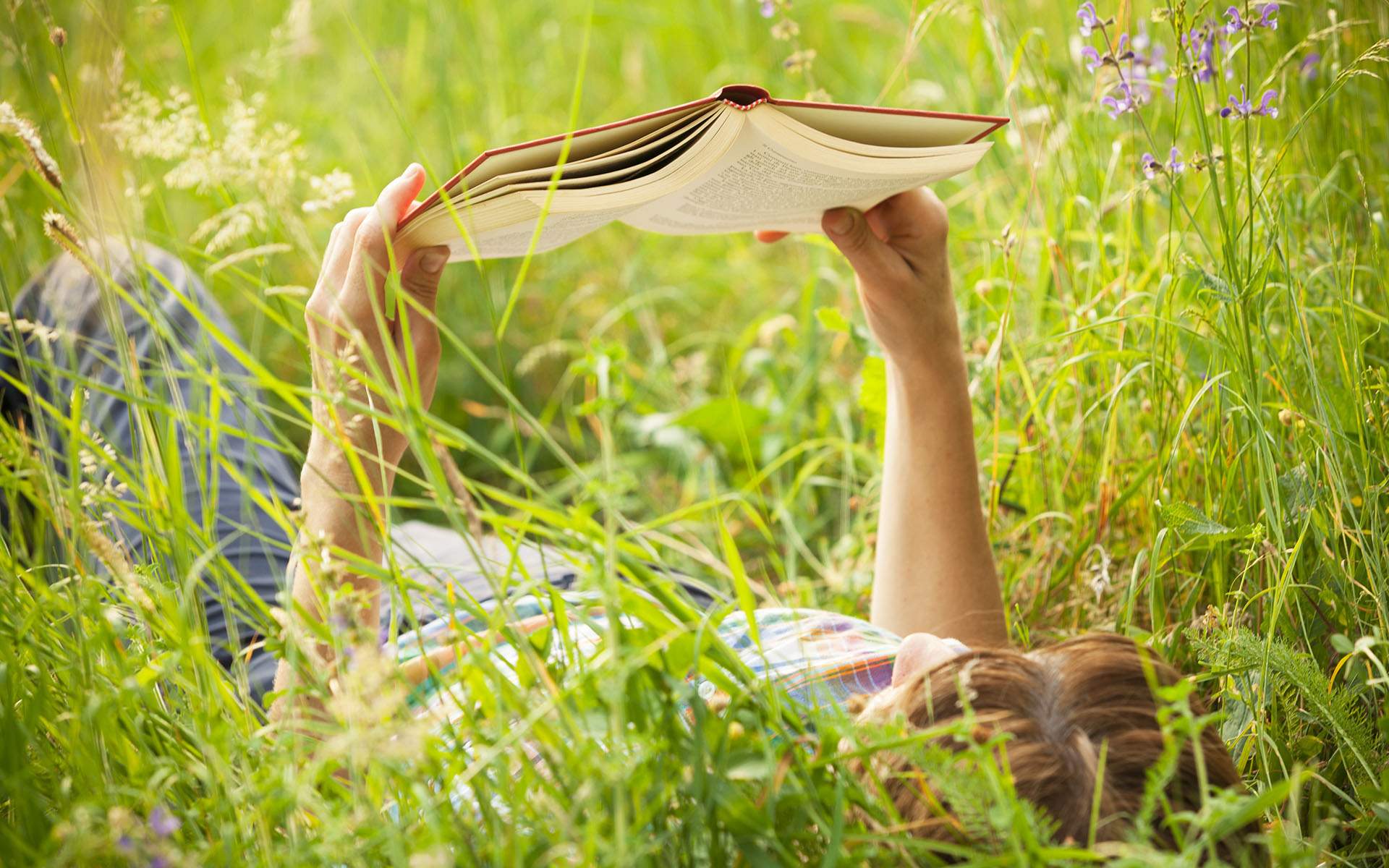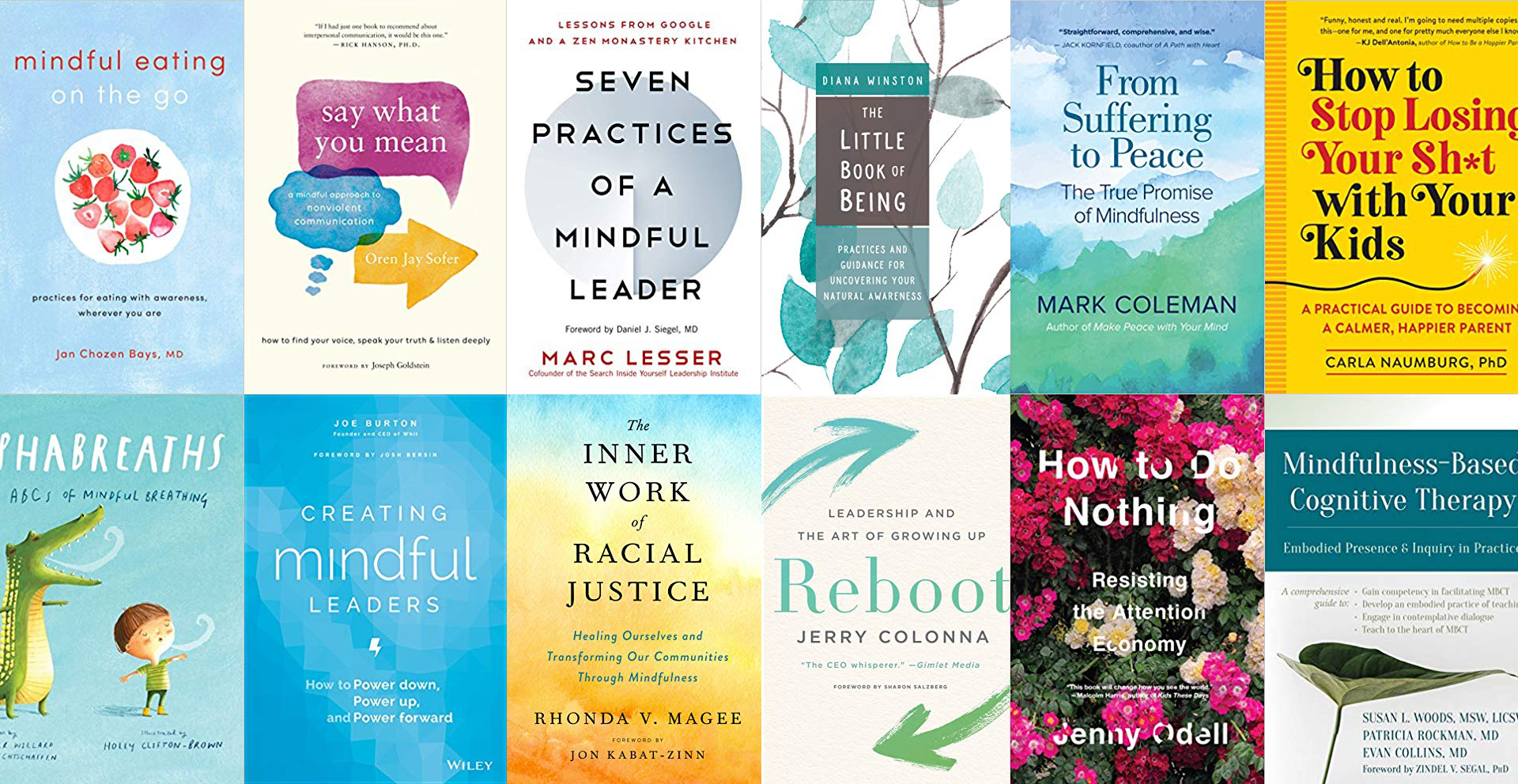1) The Joy of Movement
How Exercise Helps Us Find Happiness, Hope, Connection, and Courage
Kelly McGonigal, PhD • Avery
McGonigal’s thesis is simple—as humans, we are hardwired for movement. She builds her case through a wide-ranging survey of scientific studies, interviews with movers of all kinds, and her own personal experiences as a group-fitness leader and enthusiast.
McGonigal’s writing is personal, hospitable, and engaging, and her deep love of the subject is evident on every page.
She starts with the “runner’s high,” which lights up the same reward center in the brain as cocaine and other addictive drugs do. But since addictive drugs don’t seem to serve any evolutionary purpose, McGonigal digs into studies that reveal the runner’s high may be connected not only to our hunting-and-gathering past, but also to the kind of cooperation that saw us sharing the spoils of our endeavors, and thus surviving together. From there, McGonigal’s off and running. Along the way she investigates links between synchronized movement and empathy; the euphoric self-transcendence known as “collective effervescence” that results from moving with a group, and how that can help build and strengthen communities; and what intense physical challenges can teach us about our own resilience. She interviews marathoners, dancers, a woman who rows with a crew of over-50s, a gym-owner whose focus is on people who are working with physical disabilities, and a guy who designs obstacles for Tough Mudder races.
McGonigal’s writing is personal, hospitable, and engaging, and her deep love of the subject is evident on every page. Peppered with personal stories that touch on hope, courage, resilience, and yes, joy, The Joy of Movement will have you turning pages faster—if only to get to the part where you put the book down, lace up your sneakers, and head out to claim your birthright as a human, moving.
2) Beyond Guilt Trips
Mindful Travel in an Unequal World
Anu Taranath • Between the Lines
Growing up in the US as the child of Indian immigrants, Taranath, a professor at the University of Washington, felt she never quite fit the image of an American. Nor was she fully at home when studying in India. She describes “the familiar patterns of shame and guilt that lure me in like a comfortable sofa.” Beyond Guilt Trips arose from her conviction that, to bridge social and cultural differences, we must get in touch with global inequality and our discomfort in facing it. Only then, she says, can we “know that our differences might not be everything.” Enlivened by her travel stories—at once tense, challenging, and brightly beautiful—Taranath’s book may become required reading for those who wander, and those who want to.
3) Take in the Good
Skills for Staying Positive and Living Your Best Life
Gina Biegel • Shambhala
This new journal and guidebook is not only incredibly fun-looking, with its distinctive yellow-and-gray theme, playful fonts, and encouraging cartoons; it’s also written by a psychotherapist and author who’s delivered Mindfulness-Based Stress Reduction to teens (and their families and communities) for over a decade. In this book, Biegel zeroes in on helping teens understand neuroplasticity, the process by which our brain changes in response to our experiences—and how directing our attention to the positive, i.e. “taking in the good,” trains our brain to be happy and resilient. There’s plenty to read in here, plus lots of prompts to write, move, and try out a variety of skills for emotional health. Really, it’s all good.
4) Willful
How We Choose What We Do
Richard Robb • Yale
Over the past few decades, a growing body of literature has tried to explore why we do what we do: study what we study, buy what we buy, practice what we practice, marry who we marry. So-called “classical economics”—which has dominated throughout the modern era—posits a person most of us believe to be utterly unreal: the rational actor. Can you honestly say that all, or even most, of the choices you make in life are based on a rational weighing of the pros and cons of the available choices?
In response to this silliness, behavioral economics has grown, landing more of our decision-making in the realm of urges, needs, desires, biases. Some contemplative practitioners have been attracted to behavioral economics because it speaks to the need to navigate our emotions, rather than simply sharpen our reasoning power. It’s no small thing, since our collective choices add up to a world—and all its attendant problems.
Can you honestly say that all, or even most, of the choices you make in life are based on a rational weighing of the pros and cons of the available choices?
Columbia University professor and investment firm CEO Richard Robb now enters the fray with Willful, his attempt to provide a way of thinking about choice that covers the territory ruled by both rational choice and behavioral drives. In brief, he distinguishes actions resulting from choices based on purpose (achieving an end), and actions we take simply for their own good. In the former we make comparisons; in the latter, the choices are made unconditionally. It’s a short book that takes us on an intriguing ride, asking us to explore some age-old questions freshly.
5) Mindfulness
Where It Comes From and What It Means
Sarah Shaw • Shambhala
As part of a series known as Buddhist Foundations, Sarah Shaw, a lecturer at the Oxford Centre for Buddhist Studies, does a thorough job of tracing the history of mindfulness within Buddhism, dissecting all the strands associated with the word and the practices it represents. Shaw is noticeably astute in how she discusses the English word mindfulness. She demonstrates the understanding that once an existing word in a language acquires new meaning when used to translate a word in another language, a whole new life has begun. And words, just like offspring, cannot be controlled.
Appreciating this fact, Shaw eschews the doctrinaire. “Words do not need to be institutionalized or static,” she writes. “The word mindfulness is, one hopes, always ongoing, always susceptible to new interpretation and new enactment in literary forms and teaching methods.” In so saying, Shaw admirably places herself in the company of those for whom actual experience in mind training is of paramount importance when it comes to describing events of the mind and ascribing meaning to them. Nevertheless, she could easily still make a blanket statement that Mindfulness is Buddhist. End of story.
“The word mindfulness is, one hopes, always ongoing, always susceptible to new interpretation and new enactment in literary forms and teaching methods.”
Instead, she shows herself to be more ecumenical, declaring that her approach to mindfulness “does not, however, suggest that any one tradition, even Buddhism itself, owns the franchise on it, or is the only one that gets it right.” While many mindfulness practitioners promoting secular versions similarly don’t believe the practice to be owned by Buddhism, few would argue that Buddhism has not made the largest contribution to this form of contemplative practice.
Shaw’s excellent survey of mindfulness from its earliest days to the present is well worth the trip. Sadly, it may be used by some as a stick to brandish in defense of mindfulness practice as valid only within the one true faith of Buddhism. That would be a shame. It would do a disservice to a top-notch treatment that has much more to offer than paranoiac polemics.
6) Stay Woke
A Meditation Guide for the Rest of Us
Justin Michael WIlliams • Sounds True
Many “spiritual” writings give only incidental mention of the social and material struggles people face. They imply, “Inequality, marginalization? That’s an out-there problem. Ignore it and meditate.” Having reckoned with homophobia, personal trauma, and stress rooted in poverty and domestic violence, Justin Michael Williams has no time for that: “You need a different type of meditation. One that doesn’t pretend the struggle doesn’t exist.” He demonstrates real strength through the honesty and vulnerability of his first book. With “Freedom Meditation,” he offers you 10 steps to create a meditation (and life) practice that’s about fearlessly embracing all of who you are, to explore both your inner and outer worlds: “Meditation is not about relaxing. Meditation is about becoming more alive.”
7) The Monkey Mind Meditation Deck
30 Fun Ways for Kids to Chill Out, Tune In, and Open Up
With exquisite illustrations by Alexander Vidal, this pack of 30 cards mixes many images: We find weather (rainbow, gentle breeze, hurricane), natural features (tree, mountain, rushing river), and anthropomorphized animals (cranky crab, burrowing bunny, loyal dog) on one side, and simple, playful meditation practices on the other side. The result is a stunning variety of short, insightful practices that can be, according to the accompanying guide, “a source of invention and play, a safe way to reflect on difficult topics, and a form of nourishment and support for children navigating an increasingly complex world.” The instructions are very clearly expressed, and (best of all) the teachings embodied here avoid the extreme earnestness that can ruin meditation for people of all ages.
Podcast Reviews
1) Meditative Story
Episode: Creating Space to Stand In Truth, by Susan David
It’s a rare thing for our true self, with all of our struggles, to be seen and lovingly accepted. Especially when we’re mired in a major illness or loss, being honest enough to share that pain with others often clashes with the expectation that we should be “over it” already. How do you leave space for someone’s pain, send the message, I see you? Psychologist and author Susan David recalls a series of unconventional “love letters”—“human to human, full of heart and compassion”—that she exchanged with her English teacher, Mrs. F., while in high school and grieving her father’s death. By offering David the chance to write about her intense emotions and get an open, compassionate response, Mrs. F. helped David find peace with those emotions. Those unassuming letters were her first steps toward healing. As on all episodes of Meditative Story, podcast host Rohan Gunatillake pops in every few minutes to inject some guided meditation into the narrative: Check in with yourself, he says, and notice how the story is resonating. This is part of a “correspondence with our own heart,” as David says: “When we are truly able to see ourselves, we are more able to see others, too.”
2) Invisibilia
Episode: Raising Devendra
This episode is about “raising” a therapy chatbot: an artificial intelligence that talks to users via text message, and can deliver therapies like CBT. Yes, treating a chatbot like a human friend is unconventional, to say the least. It may sound like a very bad idea—we’re more online than ever, but also leery (for good reason) about the ways our personal data is used and misused. But researcher Shaila Chavarria wondered what could develop if she communicated with Devendra, her therapy bot, as she would with her son: through daily exchanges, asking it lots of probing questions, and watching it become more sophisticated through their “talks.” Her experiment probes what we understand about AI learning, companionship, and unconditional love. It’s reminiscent of Black Mirror, but far more optimistic.
read more
The Best Podcast Episodes of 2019
Explore the podcasts that resonated with us this year—from working with attention and focus, to the importance of reading deeply.
Read More
The Best Mindfulness Books of 2019
The Mindful Editors look back on their favourite books from this year, covering diverse topics such as mindful communication, racial justice, and simply being.
Read More










